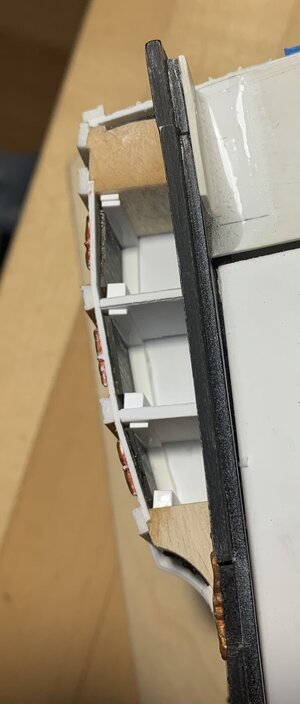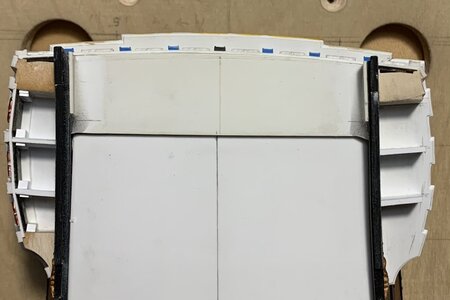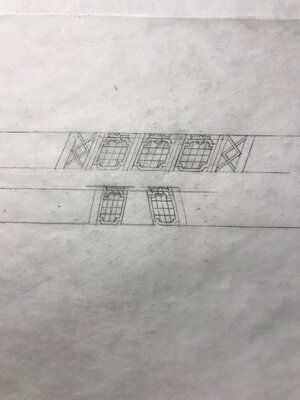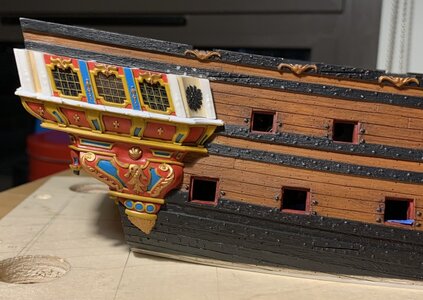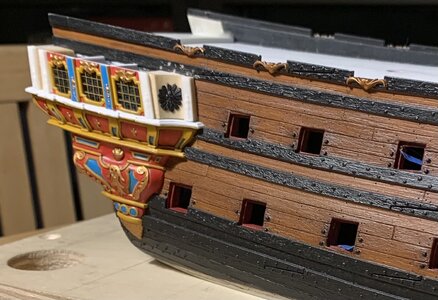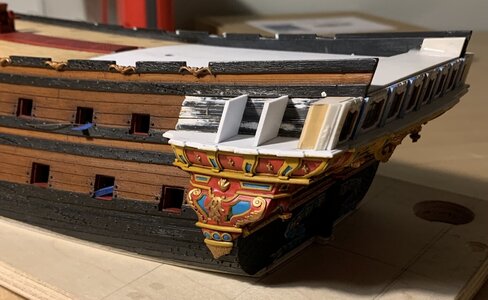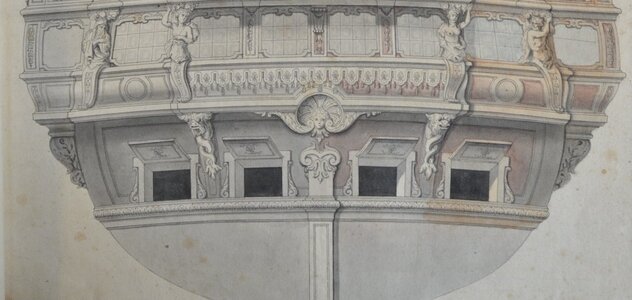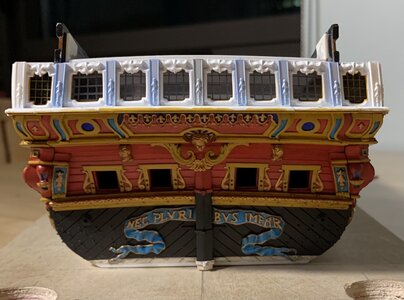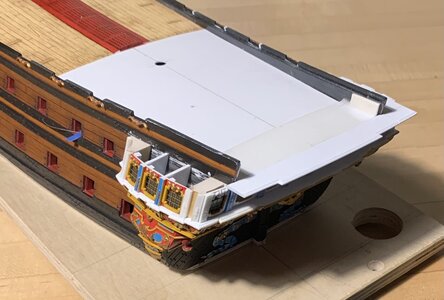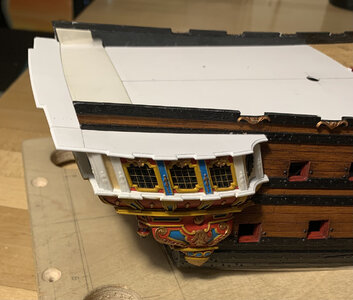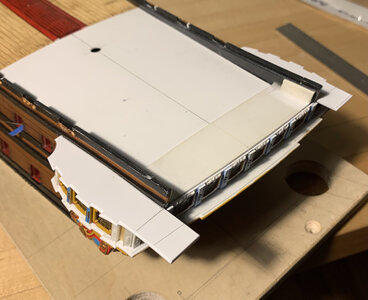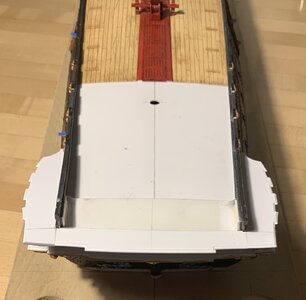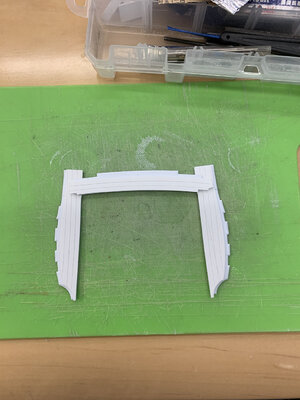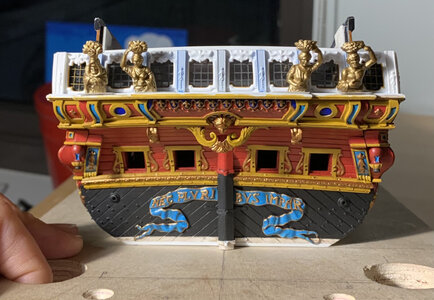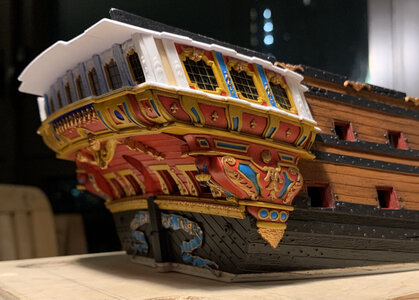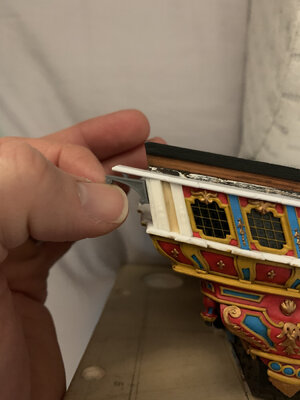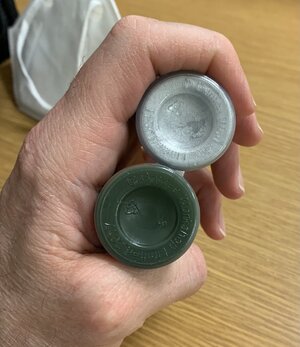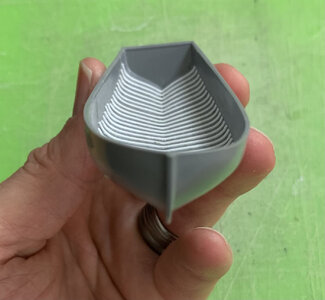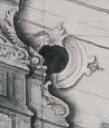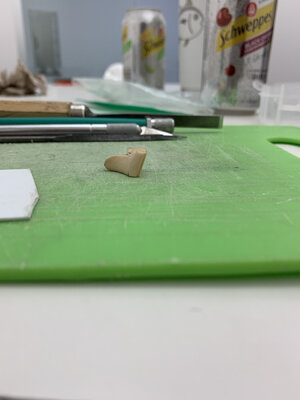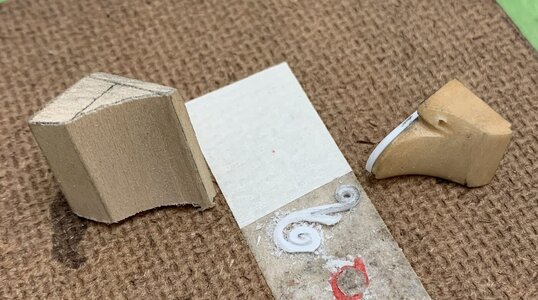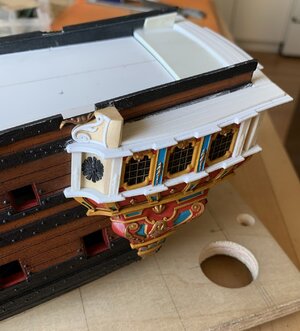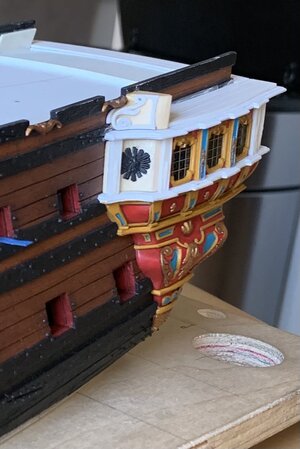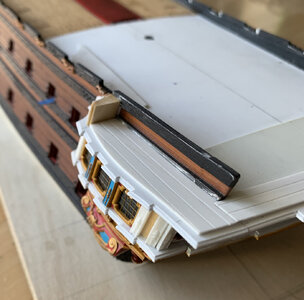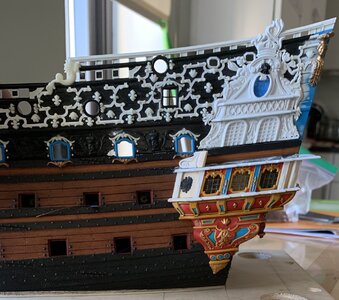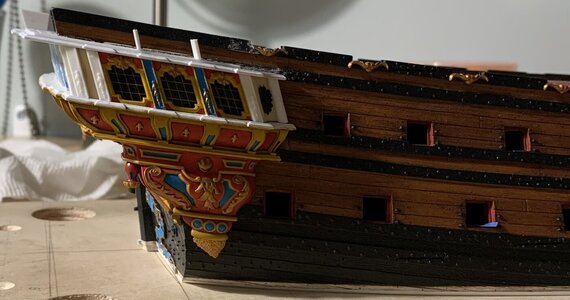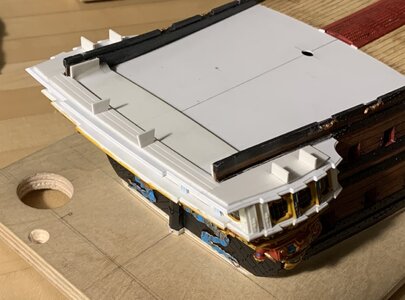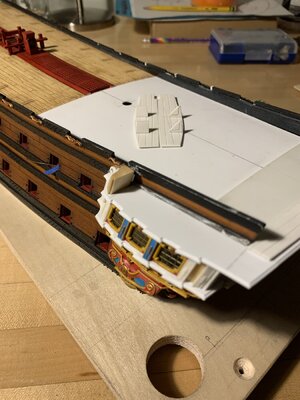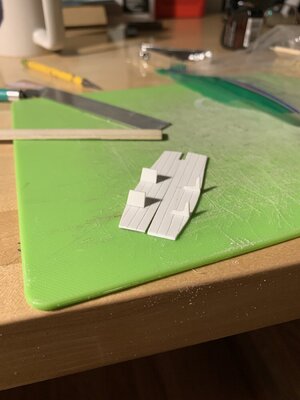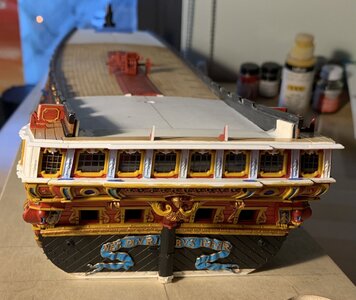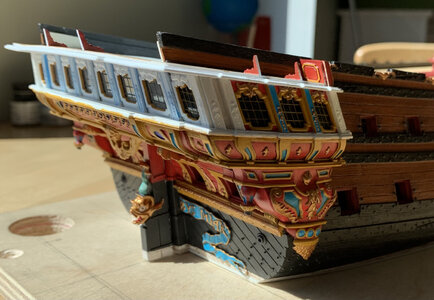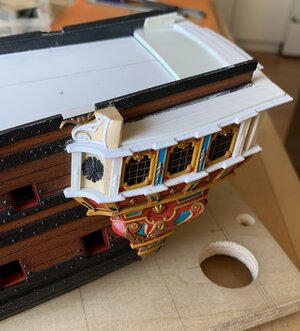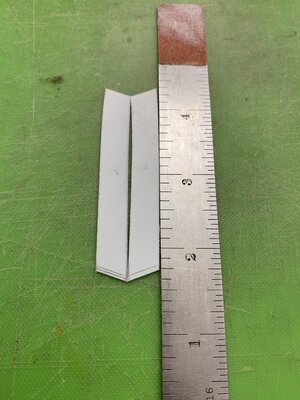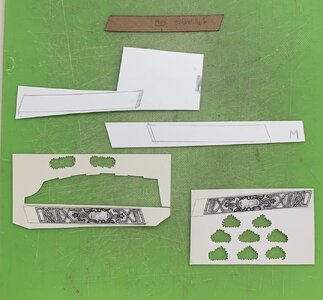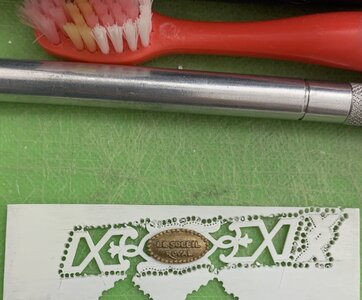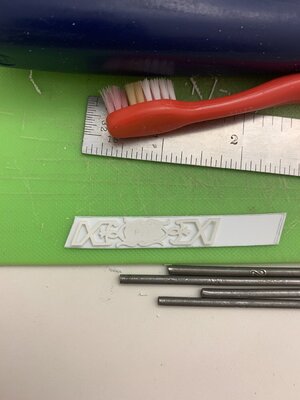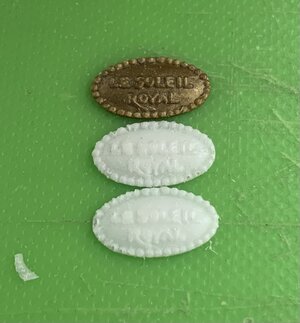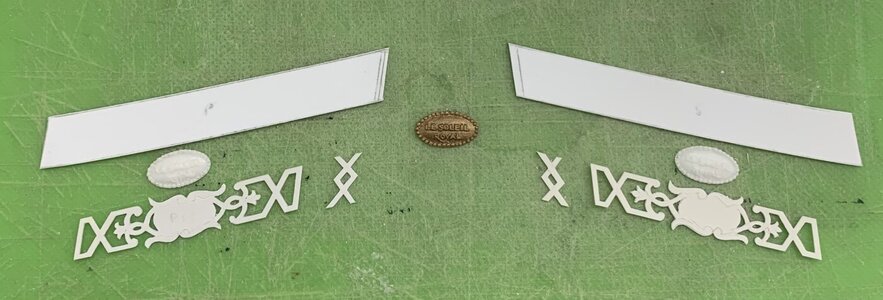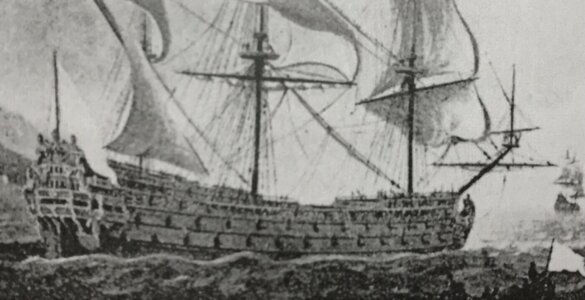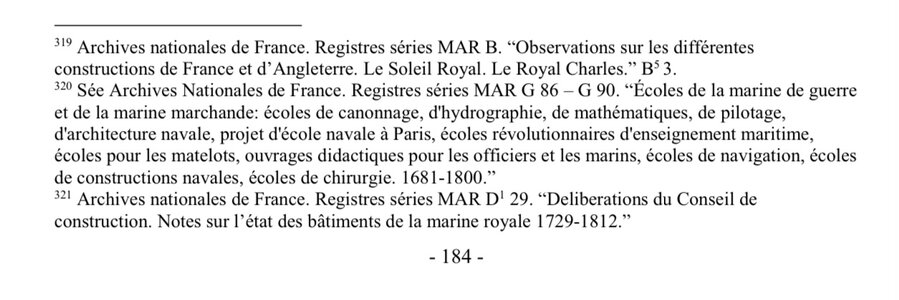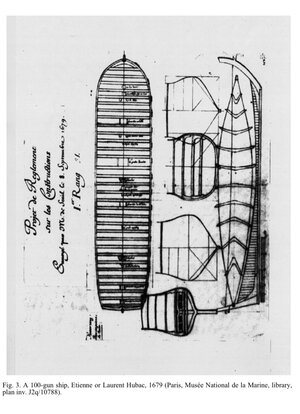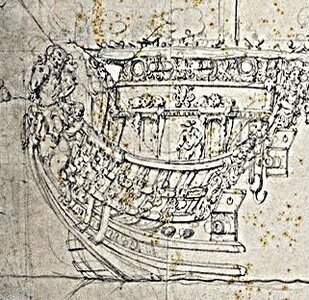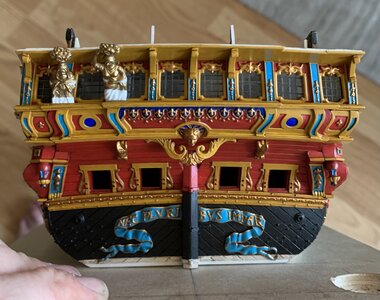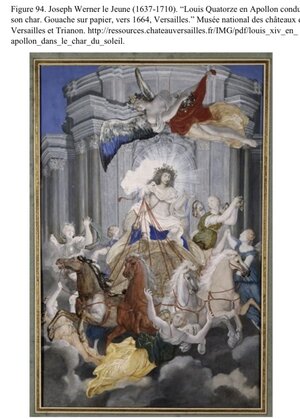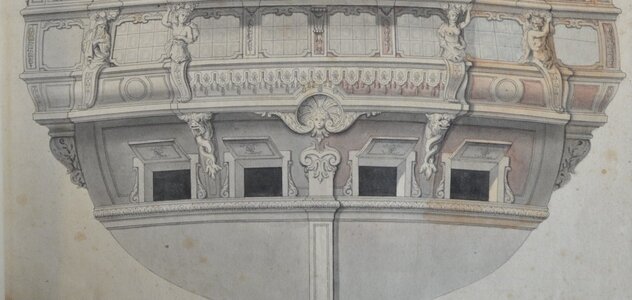Painting continues. Although the following pics don’t reflect it, all the yellow ocher is done and the walnut ink distress wash has been applied. I’ve begun the gilt work, and am making my way around the gallery.
The purpose of these photos is to illustrate the middle balcony tier, supporting corbels. The middle three are stock kit parts. The outer two were scratch-made because even the secondary kit corbels that are more shallow, in depth, still extended beyond my balcony edge; I had made a conscious decision to reduce the depth of my middle balcony because I knew there were limits to how far I could stretch the Four Seasons figures - more on them, in a moment.
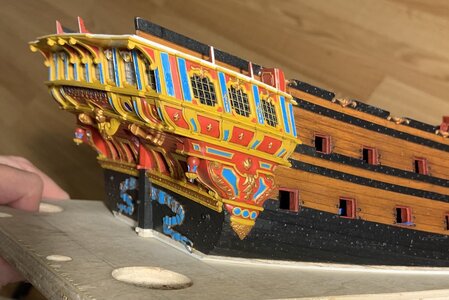
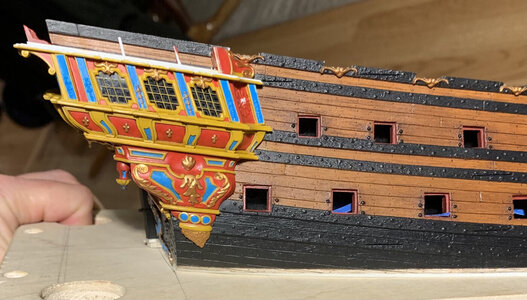
Among the myriad tiny considerations is the fact that the corbels must align with the tilting angle towards the centerline, as delineated by the pilasters, but they must also account for the secondary angle introduced by the round-up. These were very fiddly to fit.
As is my practice, I had masked-off strips on the underside of the balcony to ensure a welded styrene bond. Naturally, this necessitated a certain amount of re-touching to the yellow. The Vallejo paint I’m using is not model-specific, but from their artist’s line, instead. It thins beautifully, but requires numerous passes to achieve good color saturation with a brush. The paint also remains rather soft for a number of weeks after application. For my tastes, these are worthwhile trade-offs for the ease of application and a smooth painted surface.
The middle gallery side bulwarks are rounding into form. I made and fit the pilaster pieces, and carved the port side lattice:
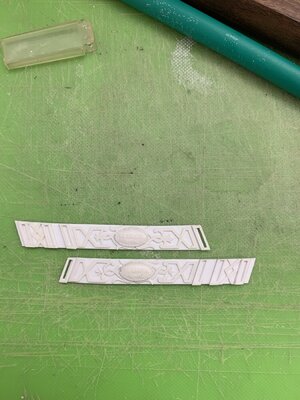
Not surprisingly these pieces became significantly more stiff when I CA-glued the resin name badges. I will have to heat-form these, before painting and installation, with a hairdryer so that they take the curve of the gallery without introducing stress.
As I did for the upper bulwark frieze, I cut hard shoulders and shallow reliefs to suggest an intertwining of the frieze banding:
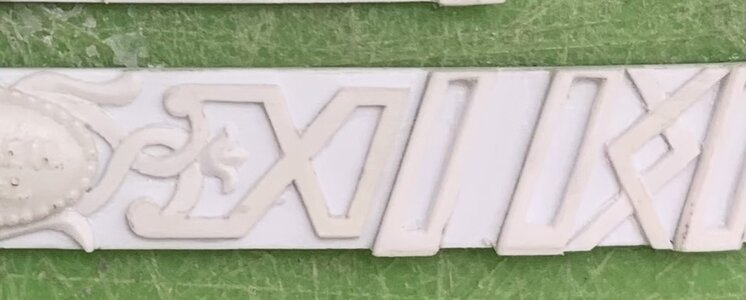
This may seem hard, but it really is not and can be accomplished with nothing more than a #11 blade to cut the shoulders, and a narrow, curved blade to sneak in and cut the reliefs.
I was going to add resin scrolls around the name plate, but the flexibility issue, together with the fact that I’d have to relieve these resin scrolls too far into the nameplates, changed my course; I decided, instead, to simply model and define the scroll shapes surrounding the nameplates. I still have yet to add the diamond flower ornaments to the Xs on either side of the nameplates.
By far, the most enjoyable phases of this project are those times when I discover an opportunity to re-incorporate stock parts of the kit to my new architecture. Adding the bow extension pieces was the first formidable challenge of this kind. The Four Seasons figures present a similarly challenging attempt at plastic surgery.
Tanneron most likely drew inspiration from this later drawing of what I believe is SR1693:
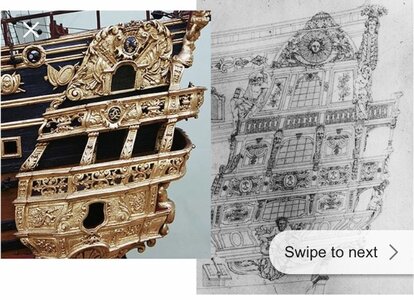
As such, there is a projecting lower stern balcony, and the Four Seasons figures have a more upright posture, in supporting the balcony above. The Heller kit reflects this same architecture.
In closing-in this lower stern balcony, I have also brought it in, closer to the stern. Consequently, if I want to use the stock figures, I realized I would have to alter their posture and lengthen them. Starting with the outer two male figures of Winter and Autumn, where the overhang is less extreme, this is what I have done:
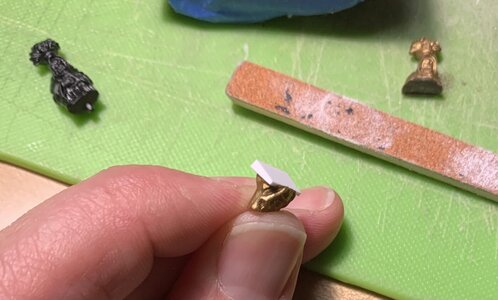
The magic entry for cutting these figures is through the back, just above the elbow, and stopping the cut before breaking through just above the hand. This weird gold plastic is more brittle than the black stuff, and I snapped the first figure, Winter, just above the hand. This was not a problem, though.
I then took a piece of 1/16” styrene strip, double-stuck it to the edge of a piece of scrapwood, and then filed a taper ranging from the thickness of the kerf (about a 1/32”) to the full 1/16”, at back.
I am always emboldened, in these surgeries, when I have a fall-back set of parts. The difference in posture is slight, but it is just enough to help these side figures conform:
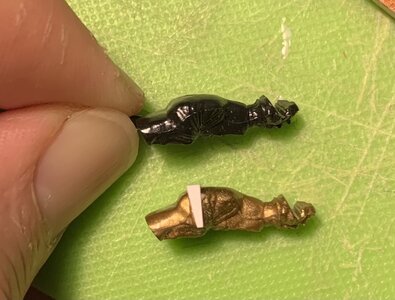
I then added a piece of 1/16” styrene to the bottom, so that I can simultaneously increase the height of the figures, as necessary, to meet the underside of the balcony, while simultaneously adjusting the outboard angle. Here is how these two outboard figures took shape:
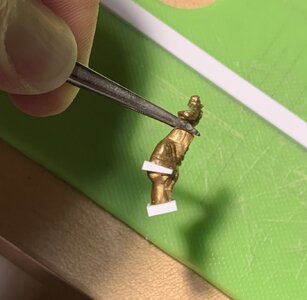
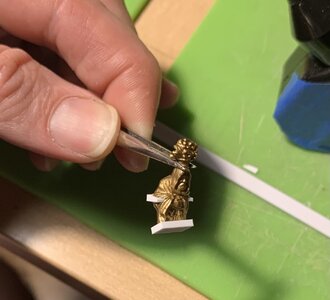
It may seem difficult, but modeling the new plastic to appear like a seamless continuation of the clothed figures really isn’t that hard:
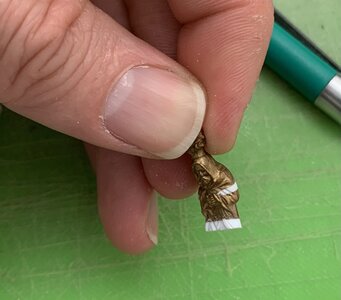
The road map of where you need to cut in and continue lines is already there for you. Also, draping clothing is fairly forgiving:
https://modelshipworld.com/uploads/monthly_2021_04/image.jpg.5a205c67cff9628da8f0dc8ca358dd18.jpg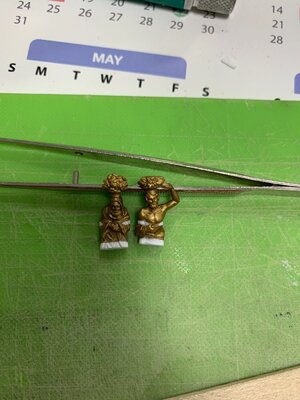
Autumn (right) really made out well, in the deal, with some additional bicep definition! It makes me wonder how well my own living body might respond to a little styrene enhancement. I haven’t been to the gym much, lately.
That is all well and good for the outer figures. I will still need to add another 1/32” at bottom, and fettle the top joint to the balcony, but I should be able to fit these without much trouble.
The middle figures required a little more extreme hunching of their posture, because the balcony above steps out, away from the stern, by about an additional 1/16”. It seemed reasonable to laminate two different thicknesses of styrene strip (1/16”&1/32”), for my torso wedge. Here is how that is taking shape:
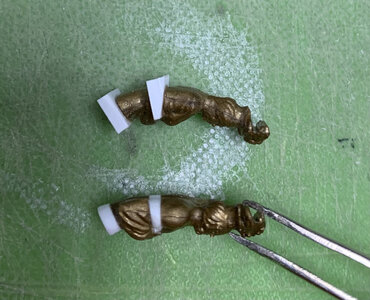
As can be seen next to the Autumn figure, now the arching of the female backs is notably more pronounced. I will probably need to add some extra plastic to the top edge of the bouquet and model it so that it appears to cope neatly around the bottom moulded edge of the balcony above. All of this may seem like a lot of fiddling about with these figures, but I can assure you that the investment in time is far less than making them from scratch. Besides, Heller did too nice a job of modeling them to believe I could do any better on my own.
So, that’s where things stand as of today. In the coming weeks, I will likely have to take a break from Soleil Royal, as my wife and I have made the difficult decision to move, yet again. We barely got to know Brooklyn, and certainly the Pandemic robbed our neighborhood of much of its charm. Nevertheless, an “affordable” 3-bedroom apartment is a unicorn worth chasing. I will periodically still post updates as small workprogresses.
As always, stay well, and thank you for stopping by.





